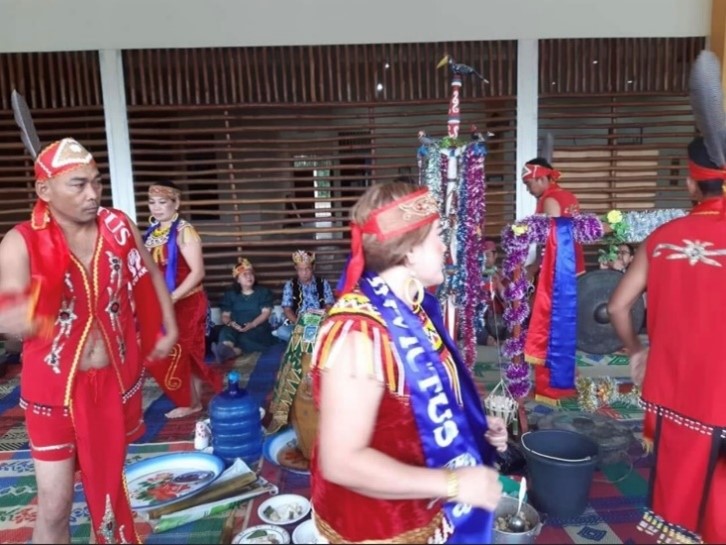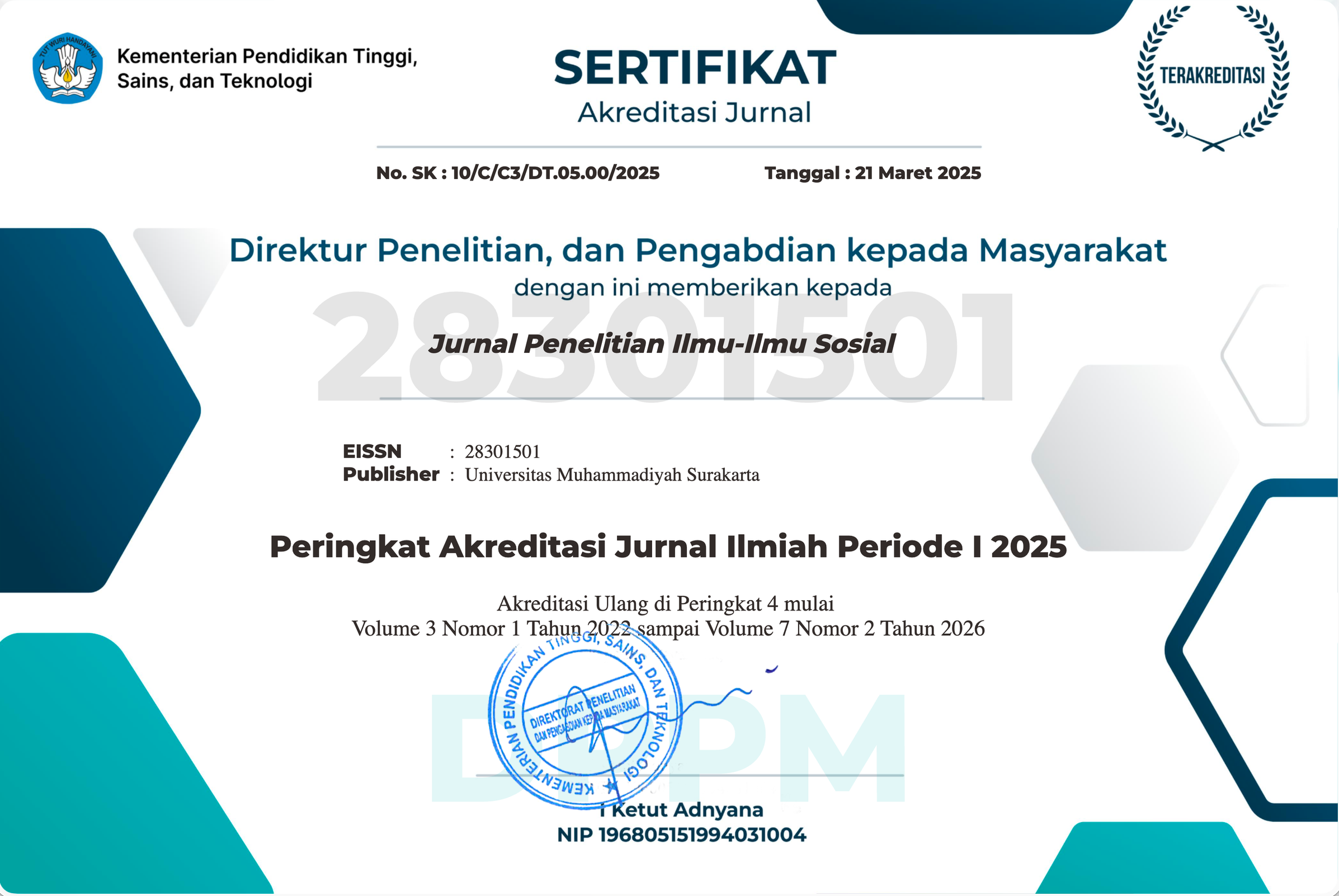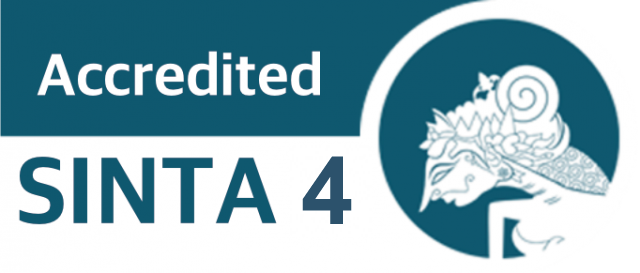Ancestral Beliefs, Religious Systems and Views of Life Traditional Dayak Community
DOI:
https://doi.org/10.23917/sosial.v4i1.1628Keywords:
Ancestral Beliefs, Customs, Religious System, Dayak TribeAbstract
This research focuses on the traditional Dayak belief systems, including their views on ancestor worship, religious systems, and worldviews. The Dayak's understanding of their belief system stems from imagination and attempts to relate their experiences to a greater power that governs the universe. The important thing about ancestral beliefs and this religious system is that nature does not exist on its own but that something has created it. They call this power Tamai Tingai, which is the center of their religious experience. Religious life is a theophanic experience that influences all Dayak human life. This paper aims to describe and analyze the concept of ancestral beliefs and religious systems as a way of life for the traditional Dayak community. This study uses phenomenological analysis and critical reading of the text using qualitative research methods. The research findings show that the Dayak people realize that religious expression through ancestor worship and religious systems is justified by human experience. In situations of helplessness, humans seek help and find it by connecting themselves to a transcendent existence.
Downloads
References
Afriansyah, A., & Sukmayadi, T. (2022). Nilai Kearifan Lokal Tradisi Sedekah Laut dalam Meningkatkan Semangat Gotong Royong Masyarakat Pesisir Pantai Pelabuhan Ratu. Jurnal Penelitian Ilmu-Ilmu Sosial, 3(1), 33–46. https://doi.org/10.23917/sosial.v3i1.549
Algenii, R. (1980). Religione E Vita di Una Tribu Daya. EMI.
Coomans, M. (1987). Manusia Daya Dahulu, Sekarang, Masa Depan. Gramedia.
Darmadi, H. (2016). Dayak Asal-Usul dan Penyebarannya di Bumi Borneo. Sosial Horizon, 3(2), 322–340.
Dhavamony, M. (2017). Phenomenology of Religion. Gregoriana University Press.
Djuweng, S. (1966). Manusia Dayak: Orang Kecil yang Terperangkap Modernisasi (1st ed.). Institut Dayakologi.
Dove, R. M. (1985). The Role of Indonesian Traditional Culture in Modernization. Gregoriana University Press.
Efriani, E., Dewantara, J. A., Utami, D., & Listyaningrum, I. (2020). Ekologi Tradisional Dayak Tamambaloh. Jurnal Ilmu Lingkungan, 18(3), 503–514. https://doi.org/10.14710/jil.18.3.503-514
Evans, I. H. N. (2019). Among Primitive People in Borneo. Service and Co Limited.
Fauni, R. N., & Sukmayadi, T. (2022). Nilai-Nilai Kearifan Lokal yang Terkandung dalam Dieng Culture Festival (DCF) di Banjarnegara untuk Membangun Karakter Bangsa. Jurnal Penelitian Ilmu-Ilmu Sosial, 3(2), 92–105.
Fisher, M. P. (2011). Living Religious (8th ed.). Laurence King Publishing.
Frazer, S. J. G. (1996). The Illustrated Golden Bough. A study in magic and religion. The Softback Preview.
Geertz, C. (1973). The Interpretation of Cultures. Basic Books.
Gomes, E. H. (1922). Seventeen Years Among the Sea Dyiaks of Borneo. Service and Co Limited.
Heriyanto. (2018). Pelaksanaan Upacara Adat Perkawinan Masyarakat Dayak Kebahan di Desa Mekar Pelita Kecamatan Sayan Kabupaten Melawi. Fatwa Hukum Faculty of Law, 1(1), 34–42.
Huijbers, T. (1992). Mencari Allah: Pengantar ke dalam Filsafat Ketuhanan (1st ed.). Kanisius.
Jensen, E. (1979). The Iban And Their Religion. Oxfprd University Press.
John W. Creswell, & J. David Creswell. (2018). Research Design: Qualitative, Quantitative, and Mixed Methods Approaches (5th ed.). SAGE Publications.
Juwaini, J. (2021). Konsep Tuhan dalam Agama Kristen (Kajian Buku Sejarah Tuhan Karen Armstrong). Abrahamic Religions: Jurnal Studi Agama-Agama, 1(1), 84. https://doi.org/10.22373/arj.v1i1.9487
King, V. T. (1978). Essays on Borneo Societies. Oxford University Press.
Koentjaraningrat. (1979). Manusia dan Kebudayaan di Indoensia. Djambatan.
Kwirinus, D. (2022a). Imanensi dan Transendensi Petara Raja Juwata Sebagai Wujud Tertinggi Orang Dayak Desa Kalimantan Barat. Prespektif, 17(2), 91–115.
Kwirinus, D. (2022b). Tradisi Perkawinan Adat dan Pandangan Hidup Berkeluarga Dayak Desa di Kalimantan Barat. Balale’: Jurnal Antropologi, 3(2), 115–132.
Leahy, L. (1982). Masalah Ketuhanan Dewasa ini: Manusia Dihadapan Allah (Vol. 1984). Kanisius.
Liyun, C. (2022). Interview Seputar Ritual Adat Dayak Iban.
Lontaan, J. U. (1975). Sejarah Hukum Adat dan Adat Istiadat Kalimantan Barat. Offset Bumirestu.
Mikael, A. A. (2010). Adat Istiadat dan Hukum Adat Pada Suku Dayak Desa. PPSDAK Pancur Kasih.
Paternus. (2001). Ngelala Adat Basa Dayak Mualang. PPSDAK Pancur Kasih.
Phang, B., & Valentinus. (2011). Minum dari Sumber Sendiri, dari Alam Menuju Tuhan. STFT Widya Sasana.
Putri, N.Q.H., Andayani, A. & Wardani, N.E., (2023). ‘Representation of cultural values in Tempuutn Senarikng of Dayak Benuaq and Tunjung tribes’, HTS Teologiese Studies/Theological Studies 79(1), a8091. https://doi.org/10.4102/hts.v79i1.8091
Rantan, D. (1983). Perjumpaan Suku Dayak Ketungau dengan Injil Yesus Kristus. IKIP Sanata Dharma.
Ranu. (2022). Wawancara Seputar Wujud Tertinggi Dayak Iban dan Kepercayaan leluhur. Interview seputar alam kepercayaan Dayak tradisional.
Riwut, Tjilik. (2003). Maneser Panatau Tatu Hiang; Menyelami Kekayaan Leluhur. Pusakalima.
Saeng, V. (2015). Religi Dayak Mualang dalam Mitos. Kanisius.
Sobian, Pether. (2021). Daily Activites of the Sub-Tribe Ethnic Community at the Betang Long House, West Kalimantan. Soshum: Jurnal Sosial dan Humaniora, v. 11, n. 2, p. 120-132, July 2021. http://ojs.pnb.ac.id/index.php/SOSHUM/article/view/2532.
Sood, M. M. (1999). Dayak Bukit: Tuhan, Manusia, Budaya. Institut Dayakologi.
Subagya, R. (1979). Agama dan Alam Kerohanian Asli di Indonesia. Nusa Indah.
Sudhiarsa, R. I. M. (2020). Antropologi Budaya 1. Dioma.
Sujarni Alloy, Albertus, & Chatarina Pancer Istiyani. (2008). Keberagaman subsuku dan bahasa Dayak di Kalimantan Barat (John Bamba, Ed.; 1st ed.). Institute Dayakologi.
Sulha, S. (2020). Pelestaraian Nilai-Nilai Budaya Masyarakat Dayak Desa Seneban Kecamatan Sejiram Kabupaten Kapuas Hulu. Jurnal Pendidikan Kewarganegaraan, 4(1), 1–15. https://doi.org/10.31571/pkn.v4i1.1719
Tariani, O. (2018). Pelaksanaan Adat Perkawinan Masyarakat Dayak Ribun di Desa Betuah Kecamatan Terentang Kabupaten Kubu Raya. Fatwa Hukum Faculty of Law, 1(1), 115–124.
Ukur, F. (1971). Tantang Djawab Suku Dayak. BPK Gunung Mulia.
Widjono, R. H. (1998). Masyarakat Dayak Menatap Hari Esok. Grasindo.
Wokal, V. V. B., Rovensius, D., & Kwirinus, D. (2020). Gereja dan Ritual Tolak Bala dalam Masyarakat Dayak. Perspektif, 15(2), 159–167.

Downloads
Submitted
Accepted
Published
Issue
Section
License
Copyright (c) 2023 Dismas Kwirinus, Valentinus Saeng

This work is licensed under a Creative Commons Attribution 4.0 International License.















